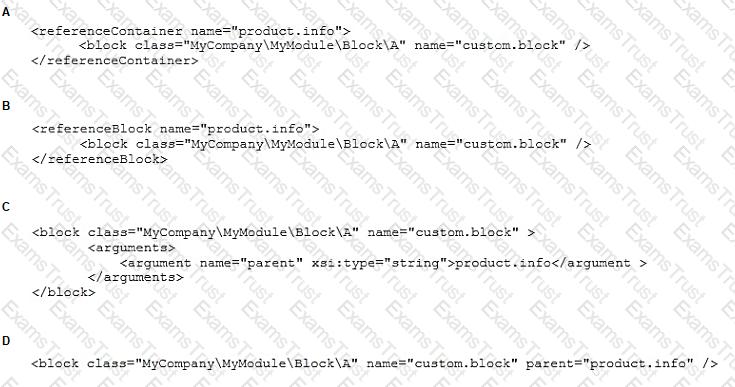How do you persist an entity to the database?
You need to add a new text attribute to all products in the Magento store. When this attribute is displayed on the product page, its values must be different depending on the selected language.
Keeping simplicity in mind, how do you add this attribute?
How do you set the custom block MyCompany\MyModule\Block\A as a child for the block named product.info using layout XML?

The constructor function for \Magento\Catalog\Model\Category contains this excerpt:

With the automatic dependency injection that Magento provides, how is the StoreManagerInterface resolved?
A merchant tasked you to add an input field for notes to the Customer Account Information backend page.
Which three actions do you specify in a module’s Data Patch to add a customer notes attribute? (Choose three.)
What scopes are available for customer attributes?
You are working on a project that contains a million SKUs. The merchant has requested the product view page to have a custom color schema and page layout depending on the product price range.
How do you implement this, keeping simplicity in mind?
You have created a module with a custom ACL resource and want to restrict access to resources of your module.
Which three items are restricted based on ACL role permissions? (Choose three.)
Magento allows you to specify custom values per store for product attributes created in the admin panel.
Which architectural pattern makes it possible?
You have created a custom module which must perform an action immediately after an order is placed, but only on the store front of the merchant site. You have selected the checkout_submit_all_after as the target event which the module will observe.
In which file will the event observer be declared?
How many shipping addresses may be selected for an order during the checkout process?
A module declares the route:

What is the layout handle of the storefront path /custom/feature/?
How do you add a foreign key to an existing table created by another module?